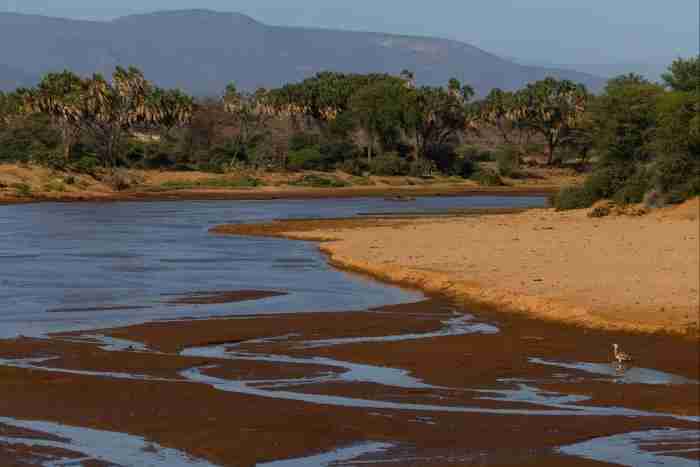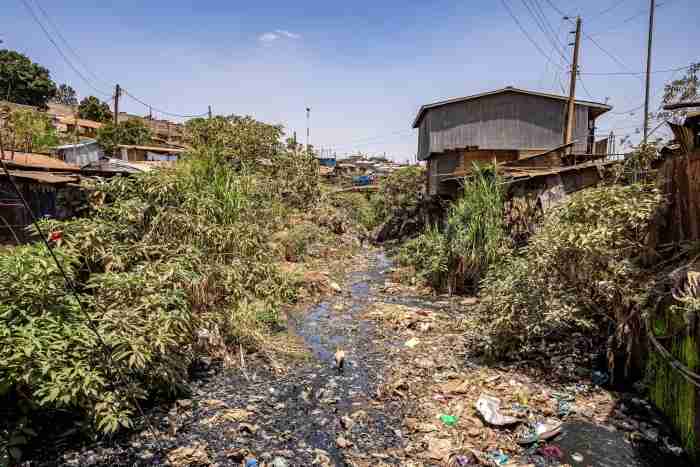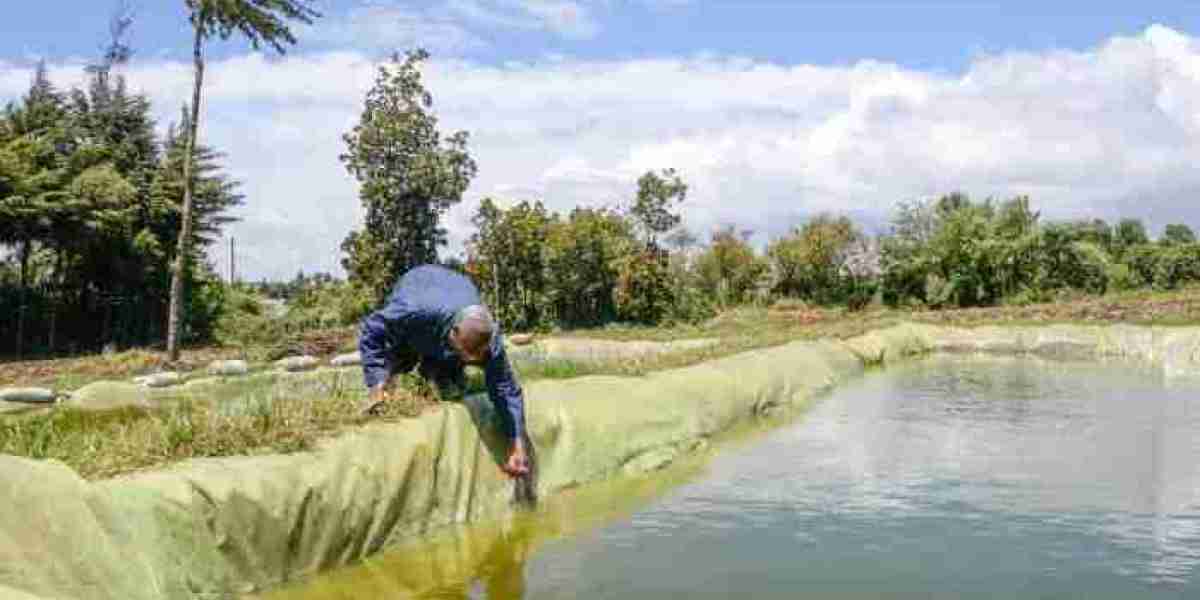The country’s storage and supply network is underdeveloped, but simple solutions can bring big benefits
Please use the sharing tools found via the share button at the top or side of articles. Copying articles to share with others is a breach of FT.com TCs and Copyright Policy. Email licensing@ft.com to buy additional rights. Subscribers may share up to 10 or 20 articles per month using the gift article service. More information can be found here.
https://www.ft.com/content/90debf42-0e13-4552-a740-dec39b52fe70
Steve Macharia leans down to his pond and scoops up water in his palms. He lets it run through his fingers. “This water pan has changed my life,” the farmer says. He surveys it and one next to it — both lined with an impermeable plastic sheet, and each holding about 100,000 litres of water. By storing rainwater in these ‘pans’, Macharia explains, he can irrigate his fields and harvest healthier cabbages not once but three times a year. This means he can now make Ks1.5mn (about $10,400) a year, rather than Ks50,000 (about $350). “The water pan is a treasure, it is gold,” he says. Using collected rainwater to irrigate fields may seem like an obvious, and easy, way to improve farming and conserve water. But, in Kenya, it is revolutionary — and vital. Based on criteria used by the UN and other bodies, the east African nation is technically “water scarce”: the amount of water available annually per person is roughly 600 cubic metres — well below the UN threshold of 1,000 cubic metres. And only 60 per cent of the 54mn Kenyans have access to safe drinking water. Climate change is exacerbating the problem. After several years of drought, Kenya recently experienced heavy rains and flash floods. With temperatures rising, these erratic extremes will occur more often, scientists say.
https://www.ft.com/content/90debf42-0e13-4552-a740-dec39b52fe70
Steve Macharia leans down to his pond and scoops up water in his palms. He lets it run through his fingers. “This water pan has changed my life,” the farmer says. He surveys it and one next to it — both lined with an impermeable plastic sheet, and each holding about 100,000 litres of water. By storing rainwater in these ‘pans’, Macharia explains, he can irrigate his fields and harvest healthier cabbages not once but three times a year. This means he can now make Ks1.5mn (about $10,400) a year, rather than Ks50,000 (about $350). “The water pan is a treasure, it is gold,” he says. Using collected rainwater to irrigate fields may seem like an obvious, and easy, way to improve farming and conserve water. But, in Kenya, it is revolutionary — and vital. Based on criteria used by the UN and other bodies, the east African nation is technically “water scarce”: the amount of water available annually per person is roughly 600 cubic metres — well below the UN threshold of 1,000 cubic metres. And only 60 per cent of the 54mn Kenyans have access to safe drinking water. Climate change is exacerbating the problem. After several years of drought, Kenya recently experienced heavy rains and flash floods. With temperatures rising, these erratic extremes will occur more often, scientists say.

Please use the sharing tools found via the share button at the top or side of articles. Copying articles to share with others is a breach of FT.com TCs and Copyright Policy. Email licensing@ft.com to buy additional rights. Subscribers may share up to 10 or 20 articles per month using the gift article service. More information can be found here.
https://www.ft.com/content/90debf42-0e13-4552-a740-dec39b52fe70
Meanwhile, Kenya’s population is due to exceed 90mn by 2050 and its economy is set to quadruple in size. By then, some predict the amount of water available per person could have halved. But, unlike desert countries, such as Bahrain and Kuwait, which rely on desalination, Kenya actually has enough water. “Kenya’s water scarcity is economic,” says Pieter Waalewijn, global lead water in agriculture specialist at the World Bank. “[Water] is available but not accessible.” Only about 15 per cent of the country’s water resources have been developed. Almost all farmers depend on rain, as they are not able to store rainwater or pump water from rivers. Kenya’s water scarcity is economic. [Water] is available but not accessible Pieter Waalewijn, World Bank Much of the water that is available ends up polluted or wasted. About 45 per cent of the country’s water supply is unaccounted for — lost or siphoned off — says Lis Bernhardt, a water and climate adaptation expert at the UN Environment Programme. “Kenya knows it’s a life or death situation,” she says. Legislators have introduced a series of measures in response. A new constitution in 2010 gave more power to Kenya’s counties, including the management of water. Then, in 2016, the country passed a new water act that is well placed to address water scarcity, analysts say. A national investment plan for water and sanitation was put in place a year ago to streamline financing. Kenya’s new president, William Ruto, has signalled that water is a priority for his government. But, with all these policies, implementation has been slow, enforcement difficult, and costs high. “The journey to achieving universal access [to water] by 2030 . . . requires substantial funding beyond the current level,” says Samwel Alima, water secretary at the Ministry of Water, Sanitation and Irrigation.
https://www.ft.com/content/90debf42-0e13-4552-a740-dec39b52fe70
Meanwhile, Kenya’s population is due to exceed 90mn by 2050 and its economy is set to quadruple in size. By then, some predict the amount of water available per person could have halved. But, unlike desert countries, such as Bahrain and Kuwait, which rely on desalination, Kenya actually has enough water. “Kenya’s water scarcity is economic,” says Pieter Waalewijn, global lead water in agriculture specialist at the World Bank. “[Water] is available but not accessible.” Only about 15 per cent of the country’s water resources have been developed. Almost all farmers depend on rain, as they are not able to store rainwater or pump water from rivers. Kenya’s water scarcity is economic. [Water] is available but not accessible Pieter Waalewijn, World Bank Much of the water that is available ends up polluted or wasted. About 45 per cent of the country’s water supply is unaccounted for — lost or siphoned off — says Lis Bernhardt, a water and climate adaptation expert at the UN Environment Programme. “Kenya knows it’s a life or death situation,” she says. Legislators have introduced a series of measures in response. A new constitution in 2010 gave more power to Kenya’s counties, including the management of water. Then, in 2016, the country passed a new water act that is well placed to address water scarcity, analysts say. A national investment plan for water and sanitation was put in place a year ago to streamline financing. Kenya’s new president, William Ruto, has signalled that water is a priority for his government. But, with all these policies, implementation has been slow, enforcement difficult, and costs high. “The journey to achieving universal access [to water] by 2030 . . . requires substantial funding beyond the current level,” says Samwel Alima, water secretary at the Ministry of Water, Sanitation and Irrigation.

Please use the sharing tools found via the share button at the top or side of articles. Copying articles to share with others is a breach of FT.com TCs and Copyright Policy. Email licensing@ft.com to buy additional rights. Subscribers may share up to 10 or 20 articles per month using the gift article service. More information can be found here.
https://www.ft.com/content/90debf42-0e13-4552-a740-dec39b52fe70
Dominick de Waal, a senior economist at the World Bank, notes “an increased urgency” but says: “The window is also closing because of the enormous demographic changes.” Some solutions are easy to identify. “If we were to safeguard what we have, then we would really deal with the water problem in the country,” says Soipan Tuya, cabinet secretary for Environment, Climate Change and Forestry. One priority is Kenya’s five so-called “water towers”: forested highland regions where rainfall flows into rivers and streams that provide about 75 per cent of the country’s surface water. Trees are crucial to the water towers. They help the soil retain water, hinder erosion and, by releasing water into the atmosphere, contribute to rainfall. But deforestation is taking a toll. Kenya’s forest cover has decreased to about 7 per cent, from 10 per cent at independence in 1963. The government is fighting back, Tuya says, through measures such as deploying more park rangers.
https://www.ft.com/content/90debf42-0e13-4552-a740-dec39b52fe70
Dominick de Waal, a senior economist at the World Bank, notes “an increased urgency” but says: “The window is also closing because of the enormous demographic changes.” Some solutions are easy to identify. “If we were to safeguard what we have, then we would really deal with the water problem in the country,” says Soipan Tuya, cabinet secretary for Environment, Climate Change and Forestry. One priority is Kenya’s five so-called “water towers”: forested highland regions where rainfall flows into rivers and streams that provide about 75 per cent of the country’s surface water. Trees are crucial to the water towers. They help the soil retain water, hinder erosion and, by releasing water into the atmosphere, contribute to rainfall. But deforestation is taking a toll. Kenya’s forest cover has decreased to about 7 per cent, from 10 per cent at independence in 1963. The government is fighting back, Tuya says, through measures such as deploying more park rangers.

